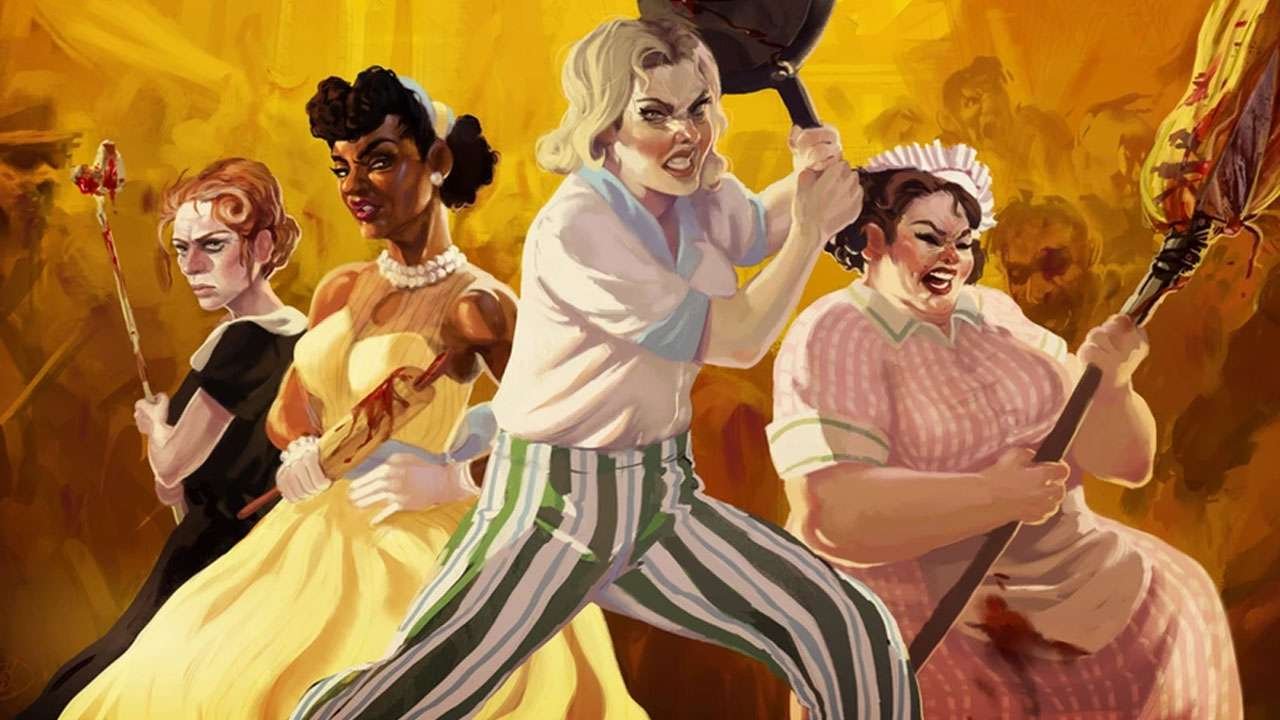Aberford is a zombie apocalypse game with something to say.
It isn’t the type of survival game with which we’re familiar, dominated by survivors scavenging for supplies while keeping hordes of the living dead at bay. It doesn’t even take place on a sprawling wasteland addled with side quests and horrors wrought by nuclear warfare.
Instead, Aberford is exploring the societal ills of gender norms by pitting 1950s housewives against their bloodthirsty, undead neighbors.
“Lazy, cannon-fodder zombies have gotten extremely old, so we wanted to bring zombies back to their metaphor-heavy roots,” says Aberford producer and writer Adam Clark. “And the 1950s lets us do that, since the 50s were very much shaped by fears of violence. And the zombies let us tap into those fears.”
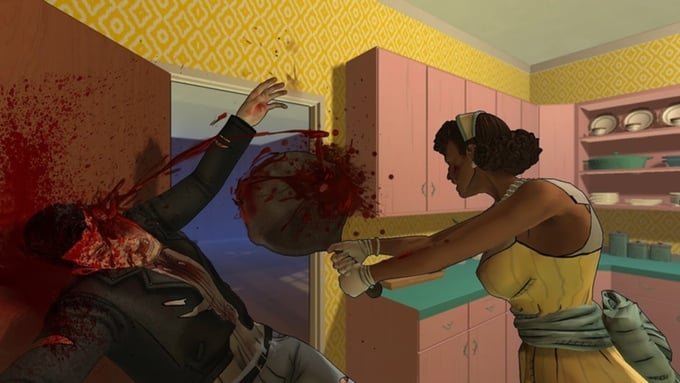
In the past, zombies have been used to represent a number of fears held by human beings; conformity, a loss of individuality, loss of humanity, and the feral nature of human beings. Aberford’s zombies represent some of these, but they’re only the vehicle to exploring oppression and socioeconomic struggles inherent in the supposed domestic tranquility of 1950s Middle America.
The best way to illustrate this point? According to Clark, it’s to make women the centre of Aberford’s apocalypse.
“It seems like many people in the 50s were afraid to be different, or to go against society’s norms. So they chose lives of conformity, but it’s not really a fair choice and we wanted that to be clear to the audience,” he says.
“But the sudden violence that the zombies present helps make those other fears fall away, and we get to see our main characters emerge in the ways they would be if they didn’t live in a society they feared would punish them for speaking or acting out.”
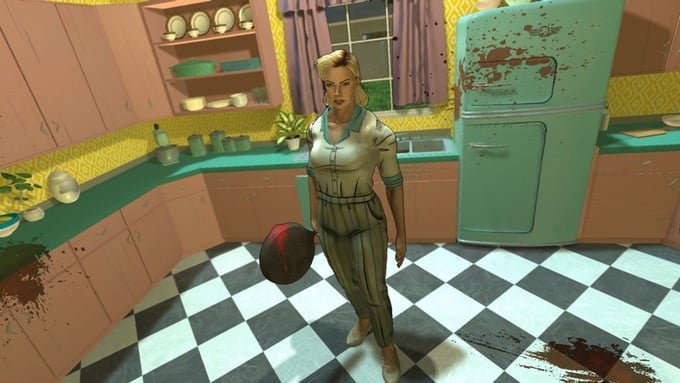
Each of the four women in Aberford’s main campaign have extensive backstories covering the variety of issues that went largely ignored or unnoticed in the time. Peggy is a white woman whose love of baseball sent her toward a potential career she later abandoned when caving to the expectation of becoming a housewife. Doris is a large, physically capable woman who felt at home working hard labour during World War II, but is later forced into taking a job as a waitress at a local diner. Sylvia is an accomplished scientist who struggles to be taken seriously in her field due to her gender. And finally, Betty is a black woman working as a nurse at the local hospital who not only deals with being unsatisfied as a woman, but also deals with gross racism on a daily basis.
There’s a common theme running through all of these stories. Each woman is coming from a background where she felt fulfilled and useful, only to be shoved back into traditional roles once the world reset to its pre-WWII state.
“They’d have grown up in the depression, and worked interesting jobs during WWII and they’d be tough and resourceful,” Clark says of the four women.
They’re not satisfied in their roles, despite what anyone says about these situations bringing them guaranteed happiness. In fact, they’re frustrated and angry, wanting to fight back at a system that desperately wants to keep them down.
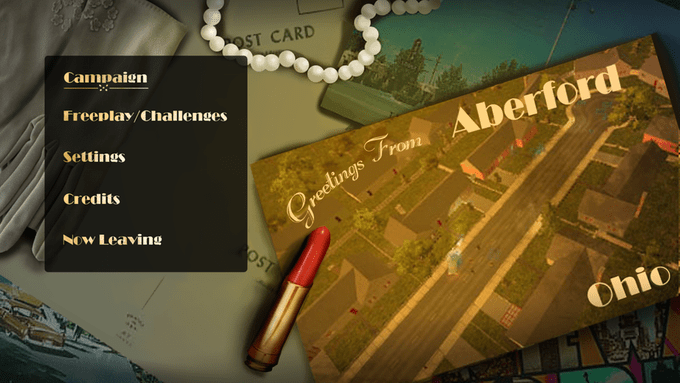
That’s why it’s so empowering for each of them to be able to take up arms and use their individual skills to fight for their lives. Because if a heart is beating and a brain is good for consuming, zombies don’t care what race or gender a person might be.
Through four different and diverse characters, Adam and the other developers at Sketch Monkey games are examining the culture of the 1950s (and today) through multiple lenses. Of course there’s the sexism and oppression of women taking centre stage, but ideas of class, race, and even toxic masculinity are addressed through the zombie-smashing action game.
“[Black nurses in World War II] performed an amazing service, and yet weren’t really given the respect and recognition of their white counterparts,” Clark says of Betty’s character arc and background. “We extended that out into Betty’s personal life, where she works hard to be everything a 50s housewife should be (well-mannered, an excellent homemaker, an accomplished chef, and even working as a nurse at the local hospital), but is still treated unfairly by the people around her.
“It gave us an angle on more insidious form of racism, where minorities are held to higher standards and yet given less respect. So we get to look at the toll this sort of pressure takes as the world collapses into a zombie crisis.”
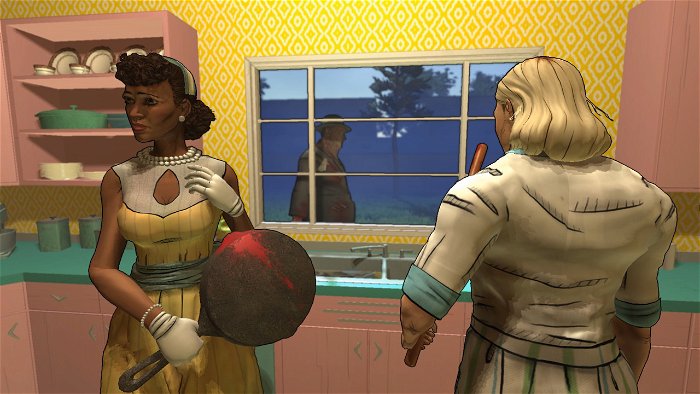
Aberford is also committed to addressing the idea of how gender roles and inequality have negative effects on both men and women.
“…we also get to take a look at what might be called ‘toxic masculinity,’ where the men in the story feel like they have to do it all themselves in order to be ‘men,’ even though they’re the ones who are susceptible to the zombie virus,” he said. “So we get to explore how gender inequality was and is harmful to both men and women.”
Clark cites games like Shadow of Mordor, Darksiders, and The Witcher as inspiration for Aberford’s third-person combat elements, while others like Telltale’s The Walking Dead and The Wolf Among Us serve as a powerful influence on its narrative design.
In the interest of saving money and guaranteeing the game will operate on a wide number of platforms, the development team at Sketch Monkey settled on the use of a cel-shaded aesthetic for the design of their world and characters. When combined with the unique and individualized appearances of each main character, the look of Aberford is nothing if not bold.

But it’s Aberford’s gumption to venture into unfamiliar territory that is particularly noteworthy. It may be yet another video game filled with zombies, but it’s using clichés to explore deeper issues present both in the ‘50s and today. If it all comes together as hoped, it could be the most insightful and important take on the zombie apocalypse yet.
Visit Aberford’s Kickstarter campaign page to learn more.
